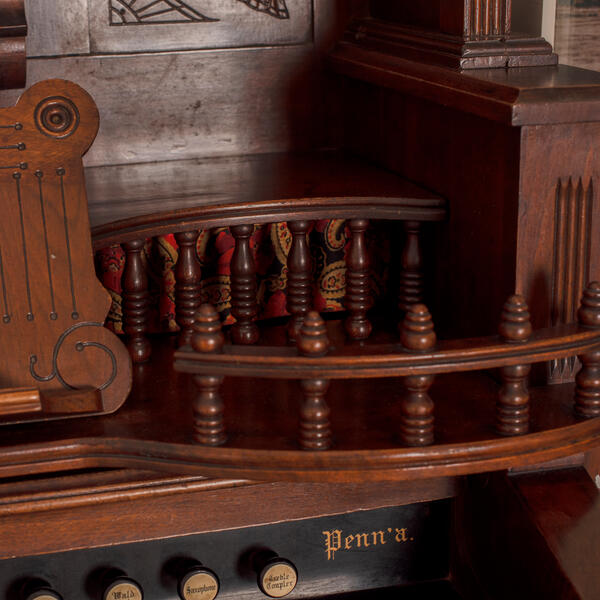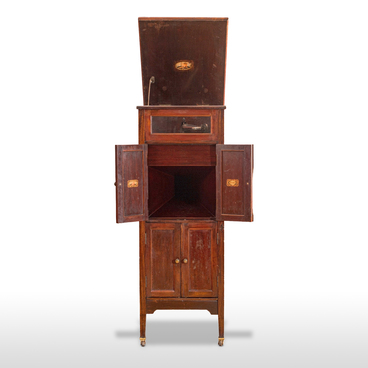The pump organ from the museum collection was manufactured by the famous Weaver Organ & Piano Company in the United States of America. In the 19th century, this musical instrument gained popularity in both Europe and the Russian Empire. It looks like a piano but sounds more like an organ. The design is most similar to an accordion.
The pump organ is equipped with pipes of various lengths. With the help of bellows, air under pressure is directed through the pipes towards the metal reeds which generate sounds. To play the instrument, a musician presses two foot pedals alternately. The range of the pump organ spans five octaves.
The pump organ was widely used to play music at home or in a parlor. They were also installed in Catholic churches that could not afford an organ. Pope Pius X blessed the instrument to be used in church services, stating that it had a soul. Russian composers, including Mikhail Ivanovich Glinka, Pyotr Ilyich Tchaikovsky, and Sergey Ivanovich Taneyev also enjoyed playing the pump organ.
The displayed instrument was installed in the Taganrog synagogue despite the debates that were still going on about this issue in 1911. The instrument was donated by Girsch Haimovich Feldman, a Russian industrialist, the head of the choral synagogue, and the father of the actress Faina Ranevskaya.
Pump organs were produced in the United States, Europe, countries of the East, and Russia. In the United States alone, around 600 companies manufactured pump organs. One of the most notable among them was the Weaver Organ Company established by Oliver J. Weaver in Pennsylvania in 1870. In 1882, the firm began manufacturing pianos in addition to pipe and pump organs.
The company was known for producing high-quality instruments that were in great demand. In 1906, The Weaver Organ & Piano Company built its 50,000th organ. Having changed its name to The Weaver Piano Company, the enterprise continued to operate until 1959. In March 2018, the factory building was destroyed by fire.



